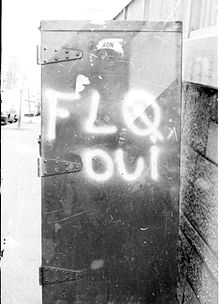 |
| L-R: Louise Arbour, Simon Schama, Nigel Farage, Mark Steyn |
Yet despite apparent similarities among the debaters's demographics, there was at least one stark distinction between the two teams that highlighted underlying premises of two different civilizations. The Pro team came from the ranks of progressive trans-national globalists who believed in EU and UN hegemony over nation-states. The Con side were nationalists who support Brexit and the sovereignty of nations. Thus, the Munk debate over refugees may be seen as part of a larger conflict between Globalists and Nationalists-- a true Clash of Civilizations.
Canada could not have been a more appropriate location, since that nation has been home to its own Clash of Civilizations since hastily cobbled together in 1867 by the British to forestall an American invasion. In turn, Canada has struggled against Quebec secession ever since--a civilizational clash between French-speaking Catholics in one province versus English-speaking Protestants in 11 others that has resulted in a crazy-quilt political system that nearly collapsed in an orgy of violence, murder and terrorism in the October Crisis 1970, when Prime Minister Pierre Trudeau (father of the current Prime Minister) imposed martial law under the War Measures Act to crush the Front de liberation du Quebec (FLQ). Thus Canada's own recent battles in its Clash of Civilizations resonated strongly with contemporary terror in Paris and Brussels.
Arguing the Pro side were Louise Arbour, C.C., G.O.Q., a French-Canadian former UN High Commissioner for Human Rights, Chief Prosecutor of the International Criminal Tribunals for Rwanda and the former Yugoslavia, and President of International Crisis Group, renowned for her prosecution of sexual assault as a crime against humanity. Simon Schama, C.B.E. is currently University Professor of History and Art History at Columbia University, previously taught at Oxford and Cambridge, works as a BBC broadcaster and is author of notable books including The Embarrassment of Riches, Citizens, A History of Britain, The Power of Art, and The Story of the Jews.
On the Con side were Nigel Farage, founder of UKIP and Member of the European Parliament and Mark Steyn, English-Canadian and part-Belgian Flemish author of America Alone: The End of the World as We Know It and Climate Change: The Facts, defendant in a 2007 Canadian Islamic Congress complaint to the Canadian Human Rights Commission against his article "The Future Belongs to Islam" in Maclean's Magazine, as well as an current defendant in the Mann v. Steyn defamation lawsuit for his allegations of "Hockey Stick" climate-change data fraud.
The Francophone-Canadian argued the Globalist position in favor of Syrian refugees; the Anglophone-Canadian took a Nationalist stand against it. In the end, Steyn crushed Arbour just as Trudeau crushed the FLQ, with overwhelming moral and intellectual force, as you can see in this clip: http://www.c-span.org/video/?c4587518.
Although other commentators have credited Steyn and Farage's citation of European rape statistics as determinative--especially in the face of a feminist prosecutor who sent people to jail for rape as a war crime--in my opinion the decisive argument in Toronto was Mark Steyn's appeal to the Canadian experience with Quebec separatism, a Clash of Civilizations the existence of which (unlike Islamic Fundamentalism) no one in Canada denies. By extending the analogy to Northern Ireland, and to European fragmentation overall, Steyn exposed the root causes of irreconcilable cultural religious conflict that underlie the refugee debate, in a way that any Canadian could instantly comprehend. Canadians clearly do not want, "One, two, three, many Quebecs," as Ho Chi Minh used to say about the Vietnam War. One such conflict is quite enough for Canada, thank you very much. Steyn did not think it a good idea to import any more. And the audience in Toronto clearly agreed with him.
Which you can see from the polling results, in which Steyn and Farage won over 22 percent of the studio audience by their presentation (or uncharitably, where Arbour and Schama lost 22 percent of their supporters by theirs):
Debate Results
PRE-DEBATE RESULTS
77% PRO23% CON
POST-DEBATE RESULTS
55% PRO45% CON
Con wins with 22% vote gain.










